Neural frames: A Tool for Studying the Tangent Bundles Underlying Image Datasets and How Deep Learning Models Process Them
Nov 19, 2022Henry Kvinge, Grayson Jorgenson, Davis Brown, Charles Godfrey, Tegan Emerson
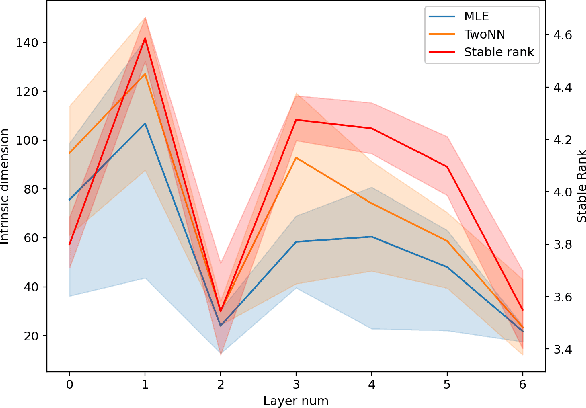
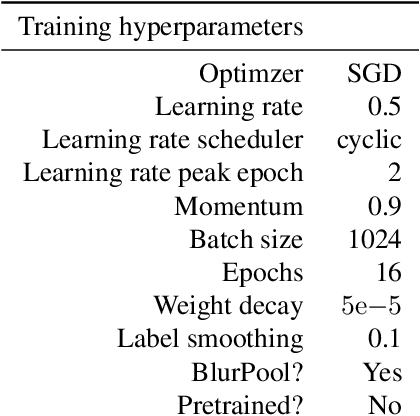

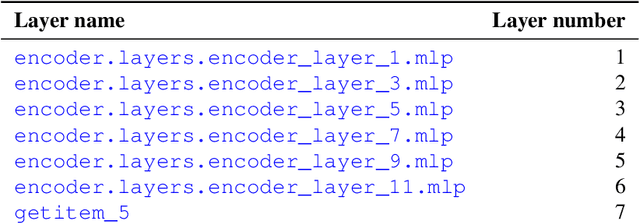
The assumption that many forms of high-dimensional data, such as images, actually live on low-dimensional manifolds, sometimes known as the manifold hypothesis, underlies much of our intuition for how and why deep learning works. Despite the central role that they play in our intuition, data manifolds are surprisingly hard to measure in the case of high-dimensional, sparsely sampled image datasets. This is particularly frustrating since the capability to measure data manifolds would provide a revealing window into the inner workings and dynamics of deep learning models. Motivated by this, we introduce neural frames, a novel and easy to use tool inspired by the notion of a frame from differential geometry. Neural frames can be used to explore the local neighborhoods of data manifolds as they pass through the hidden layers of neural networks even when one only has a single datapoint available. We present a mathematical framework for neural frames and explore some of their properties. We then use them to make a range of observations about how modern model architectures and training routines, such as heavy augmentation and adversarial training, affect the local behavior of a model.
Do Neural Networks Trained with Topological Features Learn Different Internal Representations?
Nov 14, 2022Sarah McGuire, Shane Jackson, Tegan Emerson, Henry Kvinge


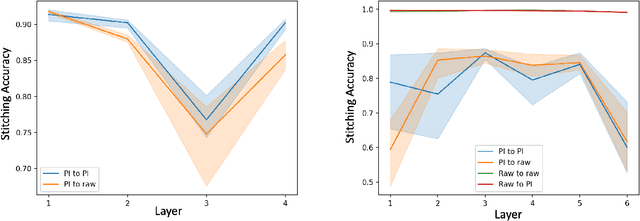

There is a growing body of work that leverages features extracted via topological data analysis to train machine learning models. While this field, sometimes known as topological machine learning (TML), has seen some notable successes, an understanding of how the process of learning from topological features differs from the process of learning from raw data is still limited. In this work, we begin to address one component of this larger issue by asking whether a model trained with topological features learns internal representations of data that are fundamentally different than those learned by a model trained with the original raw data. To quantify ``different'', we exploit two popular metrics that can be used to measure the similarity of the hidden representations of data within neural networks, neural stitching and centered kernel alignment. From these we draw a range of conclusions about how training with topological features does and does not change the representations that a model learns. Perhaps unsurprisingly, we find that structurally, the hidden representations of models trained and evaluated on topological features differ substantially compared to those trained and evaluated on the corresponding raw data. On the other hand, our experiments show that in some cases, these representations can be reconciled (at least to the degree required to solve the corresponding task) using a simple affine transformation. We conjecture that this means that neural networks trained on raw data may extract some limited topological features in the process of making predictions.
In What Ways Are Deep Neural Networks Invariant and How Should We Measure This?
Oct 07, 2022Henry Kvinge, Tegan H. Emerson, Grayson Jorgenson, Scott Vasquez, Timothy Doster, Jesse D. Lew
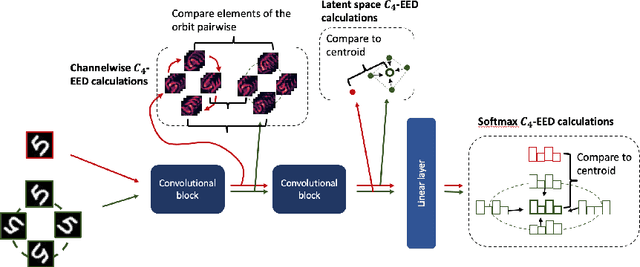
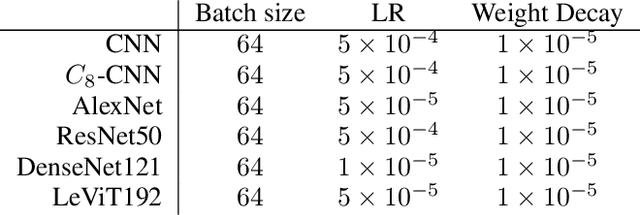
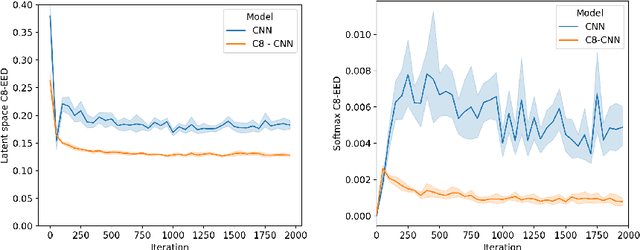
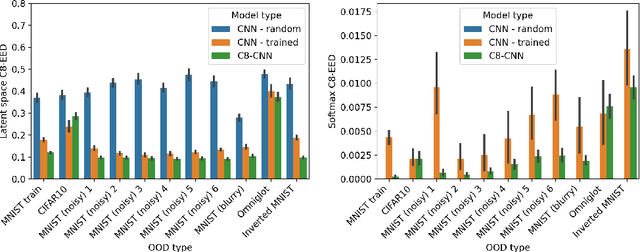
It is often said that a deep learning model is "invariant" to some specific type of transformation. However, what is meant by this statement strongly depends on the context in which it is made. In this paper we explore the nature of invariance and equivariance of deep learning models with the goal of better understanding the ways in which they actually capture these concepts on a formal level. We introduce a family of invariance and equivariance metrics that allows us to quantify these properties in a way that disentangles them from other metrics such as loss or accuracy. We use our metrics to better understand the two most popular methods used to build invariance into networks: data augmentation and equivariant layers. We draw a range of conclusions about invariance and equivariance in deep learning models, ranging from whether initializing a model with pretrained weights has an effect on a trained model's invariance, to the extent to which invariance learned via training can generalize to out-of-distribution data.
Convolutional networks inherit frequency sensitivity from image statistics
Oct 03, 2022Charles Godfrey, Elise Bishoff, Myles Mckay, Davis Brown, Grayson Jorgenson, Henry Kvinge, Eleanor Byler




It is widely acknowledged that trained convolutional neural networks (CNNs) have different levels of sensitivity to signals of different frequency. In particular, a number of empirical studies have documented CNNs sensitivity to low-frequency signals. In this work we show with theory and experiments that this observed sensitivity is a consequence of the frequency distribution of natural images, which is known to have most of its power concentrated in low-to-mid frequencies. Our theoretical analysis relies on representations of the layers of a CNN in frequency space, an idea that has previously been used to accelerate computations and study implicit bias of network training algorithms, but to the best of our knowledge has not been applied in the domain of model robustness.
On the Symmetries of Deep Learning Models and their Internal Representations
May 27, 2022Charles Godfrey, Davis Brown, Tegan Emerson, Henry Kvinge
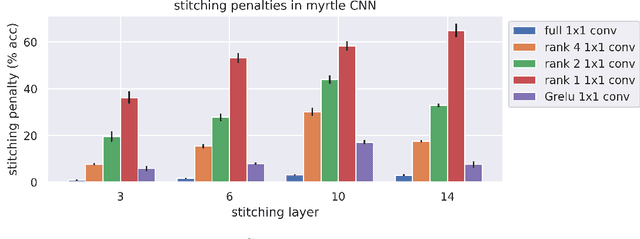
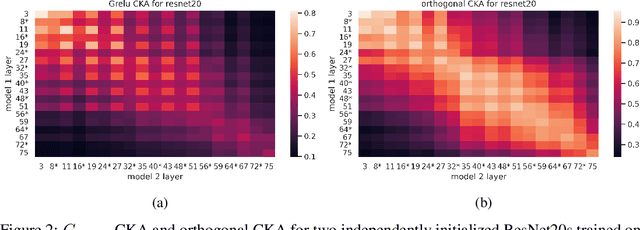
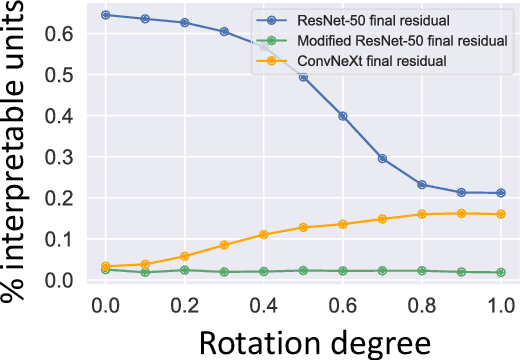

Symmetry has been a fundamental tool in the exploration of a broad range of complex systems. In machine learning, symmetry has been explored in both models and data. In this paper we seek to connect the symmetries arising from the architecture of a family of models with the symmetries of that family's internal representation of data. We do this by calculating a set of fundamental symmetry groups, which we call the \emph{intertwiner groups} of the model. Each of these arises from a particular nonlinear layer of the model and different nonlinearities result in different symmetry groups. These groups change the weights of a model in such a way that the underlying function that the model represents remains constant but the internal representations of data inside the model may change. We connect intertwiner groups to a model's internal representations of data through a range of experiments that probe similarities between hidden states across models with the same architecture. Our work suggests that the symmetries of a network are propagated into the symmetries in that network's representation of data, providing us with a better understanding of how architecture affects the learning and prediction process. Finally, we speculate that for ReLU networks, the intertwiner groups may provide a justification for the common practice of concentrating model interpretability exploration on the activation basis in hidden layers rather than arbitrary linear combinations thereof.
TopTemp: Parsing Precipitate Structure from Temper Topology
Apr 01, 2022Lara Kassab, Scott Howland, Henry Kvinge, Keerti Sahithi Kappagantula, Tegan Emerson
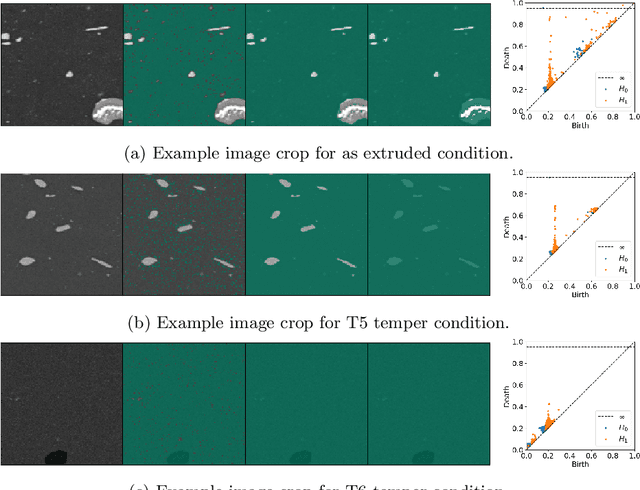

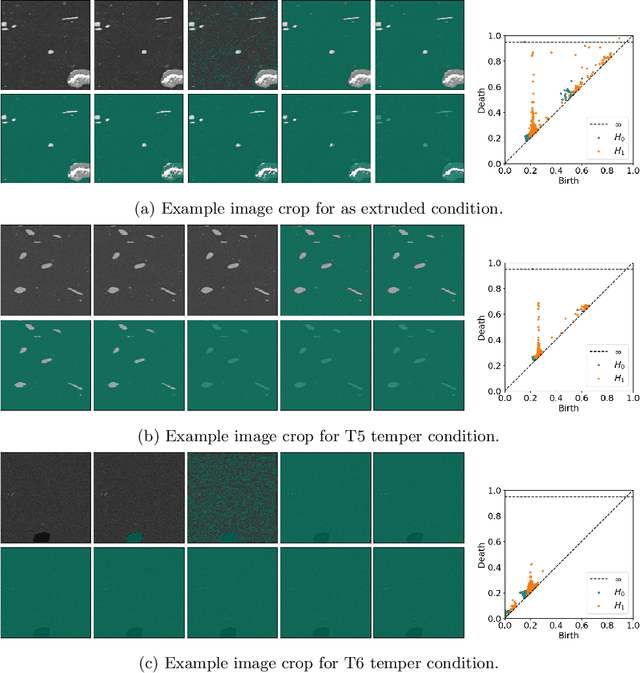

Technological advances are in part enabled by the development of novel manufacturing processes that give rise to new materials or material property improvements. Development and evaluation of new manufacturing methodologies is labor-, time-, and resource-intensive expensive due to complex, poorly defined relationships between advanced manufacturing process parameters and the resulting microstructures. In this work, we present a topological representation of temper (heat-treatment) dependent material micro-structure, as captured by scanning electron microscopy, called TopTemp. We show that this topological representation is able to support temper classification of microstructures in a data limited setting, generalizes well to previously unseen samples, is robust to image perturbations, and captures domain interpretable features. The presented work outperforms conventional deep learning baselines and is a first step towards improving understanding of process parameters and resulting material properties.
Fiber Bundle Morphisms as a Framework for Modeling Many-to-Many Maps
Mar 15, 2022Elizabeth Coda, Nico Courts, Colby Wight, Loc Truong, WoongJo Choi, Charles Godfrey, Tegan Emerson, Keerti Kappagantula, Henry Kvinge
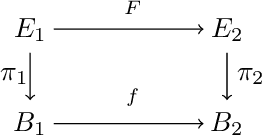

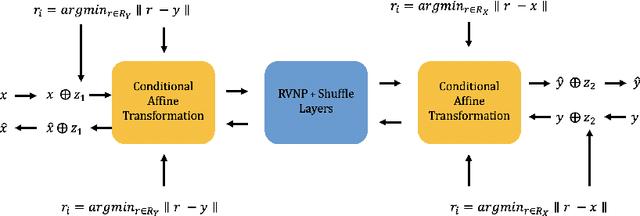
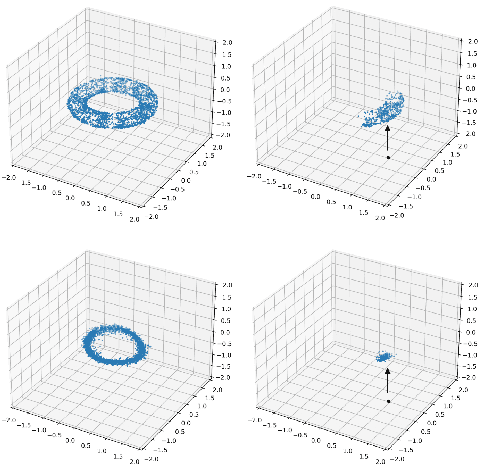
While it is not generally reflected in the `nice' datasets used for benchmarking machine learning algorithms, the real-world is full of processes that would be best described as many-to-many. That is, a single input can potentially yield many different outputs (whether due to noise, imperfect measurement, or intrinsic stochasticity in the process) and many different inputs can yield the same output (that is, the map is not injective). For example, imagine a sentiment analysis task where, due to linguistic ambiguity, a single statement can have a range of different sentiment interpretations while at the same time many distinct statements can represent the same sentiment. When modeling such a multivalued function $f: X \rightarrow Y$, it is frequently useful to be able to model the distribution on $f(x)$ for specific input $x$ as well as the distribution on fiber $f^{-1}(y)$ for specific output $y$. Such an analysis helps the user (i) better understand the variance intrinsic to the process they are studying and (ii) understand the range of specific input $x$ that can be used to achieve output $y$. Following existing work which used a fiber bundle framework to better model many-to-one processes, we describe how morphisms of fiber bundles provide a template for building models which naturally capture the structure of many-to-many processes.
DNA: Dynamic Network Augmentation
Dec 17, 2021Scott Mahan, Tim Doster, Henry Kvinge




In many classification problems, we want a classifier that is robust to a range of non-semantic transformations. For example, a human can identify a dog in a picture regardless of the orientation and pose in which it appears. There is substantial evidence that this kind of invariance can significantly improve the accuracy and generalization of machine learning models. A common technique to teach a model geometric invariances is to augment training data with transformed inputs. However, which invariances are desired for a given classification task is not always known. Determining an effective data augmentation policy can require domain expertise or extensive data pre-processing. Recent efforts like AutoAugment optimize over a parameterized search space of data augmentation policies to automate the augmentation process. While AutoAugment and similar methods achieve state-of-the-art classification accuracy on several common datasets, they are limited to learning one data augmentation policy. Often times different classes or features call for different geometric invariances. We introduce Dynamic Network Augmentation (DNA), which learns input-conditional augmentation policies. Augmentation parameters in our model are outputs of a neural network and are implicitly learned as the network weights are updated. Our model allows for dynamic augmentation policies and performs well on data with geometric transformations conditional on input features.
Differential Property Prediction: A Machine Learning Approach to Experimental Design in Advanced Manufacturing
Dec 03, 2021Loc Truong, WoongJo Choi, Colby Wight, Lizzy Coda, Tegan Emerson, Keerti Kappagantula, Henry Kvinge


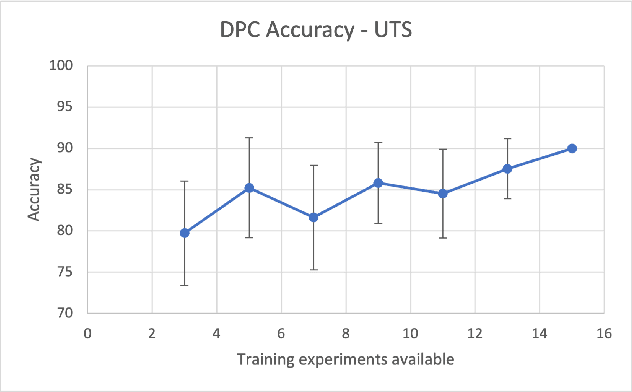

Advanced manufacturing techniques have enabled the production of materials with state-of-the-art properties. In many cases however, the development of physics-based models of these techniques lags behind their use in the lab. This means that designing and running experiments proceeds largely via trial and error. This is sub-optimal since experiments are cost-, time-, and labor-intensive. In this work we propose a machine learning framework, differential property classification (DPC), which enables an experimenter to leverage machine learning's unparalleled pattern matching capability to pursue data-driven experimental design. DPC takes two possible experiment parameter sets and outputs a prediction of which will produce a material with a more desirable property specified by the operator. We demonstrate the success of DPC on AA7075 tube manufacturing process and mechanical property data using shear assisted processing and extrusion (ShAPE), a solid phase processing technology. We show that by focusing on the experimenter's need to choose between multiple candidate experimental parameters, we can reframe the challenging regression task of predicting material properties from processing parameters, into a classification task on which machine learning models can achieve good performance.
Brittle interpretations: The Vulnerability of TCAV and Other Concept-based Explainability Tools to Adversarial Attack
Oct 14, 2021Davis Brown, Henry Kvinge
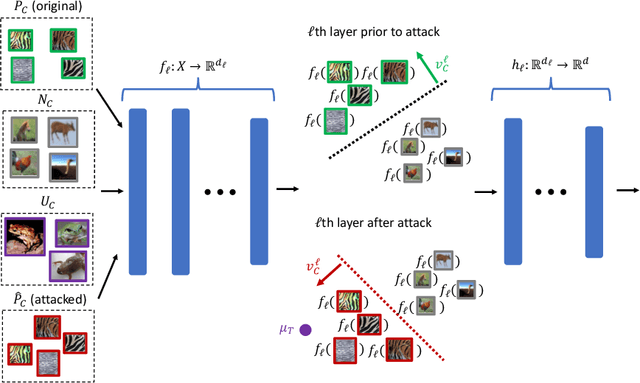
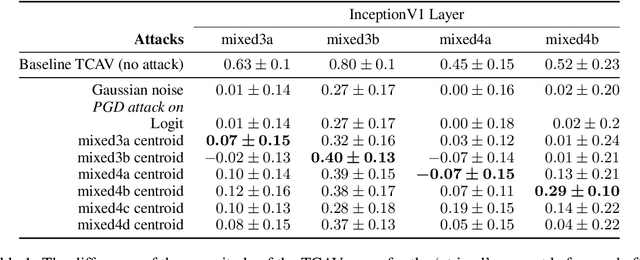

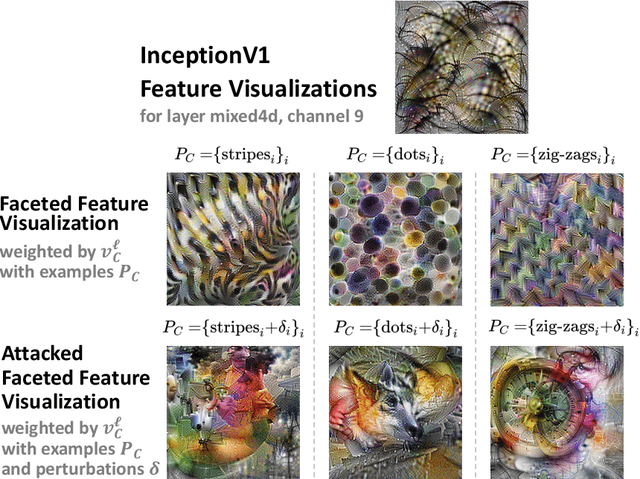
Methods for model explainability have become increasingly critical for testing the fairness and soundness of deep learning. A number of explainability techniques have been developed which use a set of examples to represent a human-interpretable concept in a model's activations. In this work we show that these explainability methods can suffer the same vulnerability to adversarial attacks as the models they are meant to analyze. We demonstrate this phenomenon on two well-known concept-based approaches to the explainability of deep learning models: TCAV and faceted feature visualization. We show that by carefully perturbing the examples of the concept that is being investigated, we can radically change the output of the interpretability method, e.g. showing that stripes are not an important factor in identifying images of a zebra. Our work highlights the fact that in safety-critical applications, there is need for security around not only the machine learning pipeline but also the model interpretation process.
 Add to Chrome
Add to Chrome Add to Firefox
Add to Firefox Add to Edge
Add to Edge